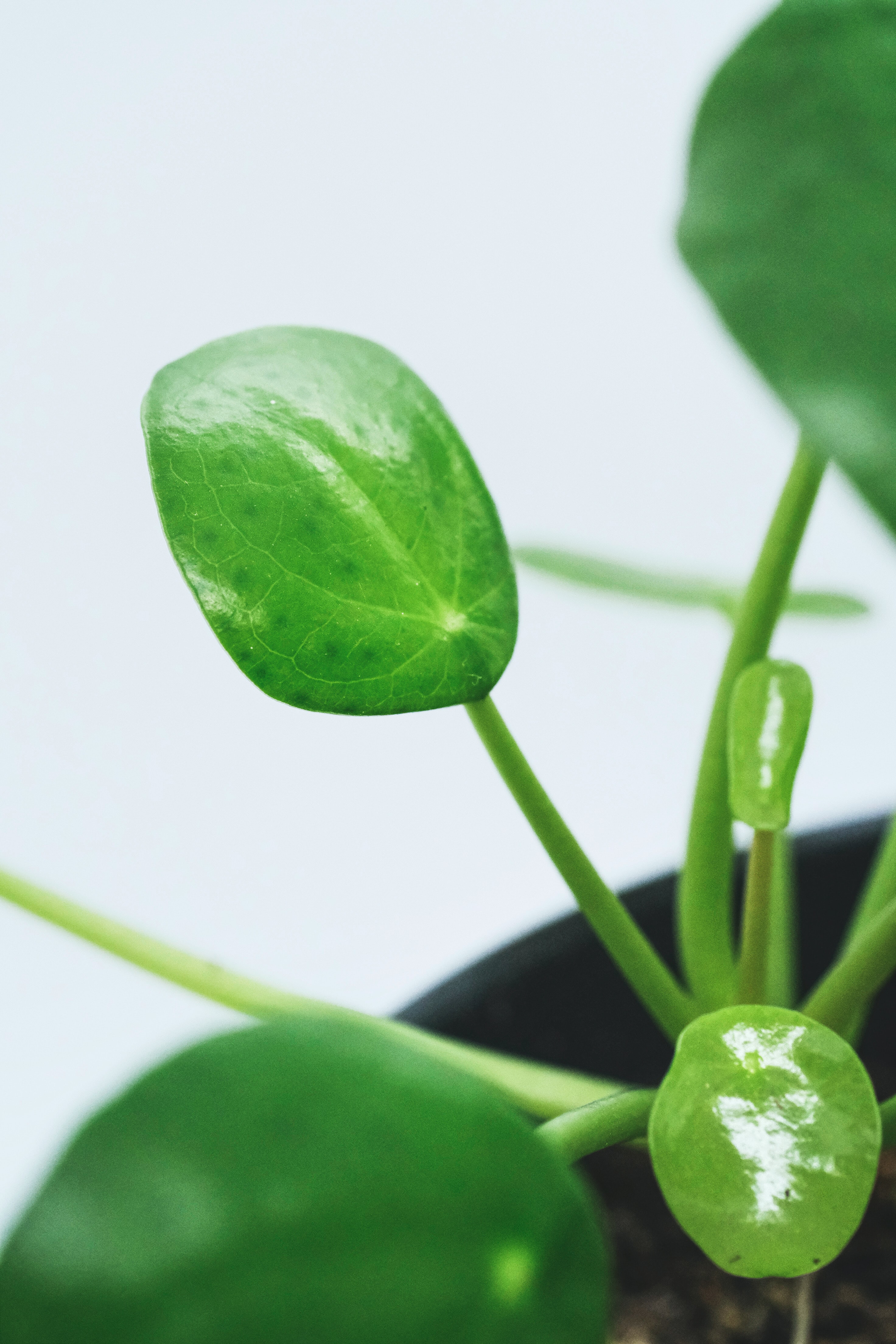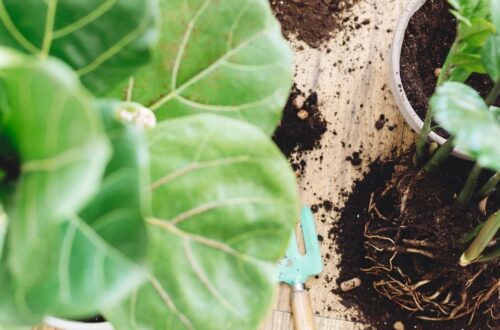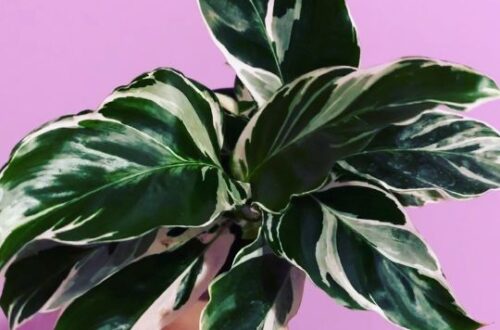Pilea Peperomioides Care Guide: How To Care for The Friendship Plant
How do you not love these adorable plants? Pilea Peperomioides, the plant of many nicknames. The friendship plant, the pancake plant, the UFO plant. There’s so many reasons why this adorable little plant exploded in popularity not too long ago and has sustained its larger than life reputation ever since. Keep reading on for all of the specifics, but the main reason for this is that pilea peperomioides care is very easy and straightforward. Here’s how to care for your pilea peperomioides.
First…why do we love them?
Once upon a time, pilea peperomioides were in fact, very hard to come by and considered quite rare! The reasons are very apparent. The unusual growth patterns give them a very adorable and stylish appearance which will draw people in. They also grow little “pups” under the right conditions, that you can separate and propagate! You can share these baby plants with friends and family, which gave the plant its infamous nickname “the friendship plant”. Because they are able to propagate so quickly, they are now readily available in most areas. They can even be considered “common houseplants”, but many plant collectors will tell you this cute little plant is worth the hype!
Now, Pilea Peperomioides Care Requirements:
One of the biggest breakthroughs to understanding Pilea Peperomioides care is by looking at their structure. They are similar to peperomia or succulent houseplant varieties. They have thick round leaves. These leaves almost like cardboard texture as the plant matures. Their stem can also get thick and almost woody in texture as it matures as well. This lets you know right away that its care needs quite similar to that of a peperomia or succulent, as they can store excess water.
Light:
Light is foundational in Pilea Peperomioides care. These plants enjoy bright, indirect light and are happiest in either and East or West window, or pulled back from a southern exposed window. Too much light may burn their leaves, so you might need to pull it back slightly from a window if it’s getting blasted with sun. Too little light, and the plant will only put out sparse growth (also known as “leggy” growth).
You may notice your Pilea Peperomioides shifting its large, lily pad shaped leaves in the direction of the window, and beginning to lean towards its light source. To fix this, you may need to rotate your houseplant from time to time. It really loves to soak in that good light!
Water:
Like any other houseplants, water is the one area where people struggle with the most with Pilea Peperomioides. Their leaves are thick and coarse, indicating their ability to retain lots of water, which means that they can be sensitive to overwatering. They do not appreciate sitting in wet soil, and they will drop leaves or turn mushy. It’s good practice to let the soil dry out between watering, as you would for a more succulent plant. Pilea Peperomioides do appreciate a good bottom watering, where possible. If the leaves are droopy, that’s a good indicator that it is ready for a drink! Luckily, they do not seem to be incredibly sensitive to tap water, unlike calatheas or other more sensitive plants. NO houseplant likes cold water, so room temperature is preferred.
Soil and Pot Choice
Pilea Peperomioides do incredibly well in terra cotta pots as they are known to leech excess moisture from the soil. They can also do fairly well in a nursery pot or a cache pot. Regardless of the pot that you choose, drainage is paramount. Here’s more information on choosing the best pot for your plant.
With drainage in mind, having a chunky, well-draining soil will be very beneficial to your Pilea Peperomioides care. Adding a bit of orchid bark, perlite or cactus mix will keep you Pilea Peperomioides very happy.
Fertilizer
You can fertilize your Pilea Peperomioides during the growing season (in the Northern Hemisphere this can range from April to October). Follow the directions carefully, and you can always dilute the fertilizer a little more than requested to prevent burning the leaves from over-fertilized.
Temperature and Humidity
Houseplants in general, enjoy warmer, humid environments. Pilea Peperomioides are quite hardy, however, and are more likely to tolerate of drier spaces, and even cooler spaces. It isn’t recommended to stick them near a cold, drafty window, of course, but are less sensitive than your softer tropical foliage plants.
Propagation and Pups
Now the best part of Pilea Peperomioides…the pups! When given optimal conditions, it won’t be long before you start to notice tiny baby plants popping out of the soil. It’s best to wait until the pups are about 2 inches tall before moving them to increase their chances of survival on their own. Cut the pups from the mother plant (they should be attached by a woody stem) with a sanitized blade or pruning shears. If the roots have already started to form, you may have to gently untangle them from the mother plant.
Once you’ve completely removed the pup, you have a few options
- Pups can be planted directly in the soil, and just keep the soil moist for a little while until the roots are better established
- If more root growth is needed, pop the pup in distilled water, making sure that only the roots are submerged. Transition the plant to soil once the roots are ready. (full blog on propagation coming soon!)

Pests:
Pilea Peperomioides are not extremely pest prone, but they certainly are not immune to houseplant pests either. Fungus Gnats, Mealy bugs, thrips, scale or spidermites can munch on your plant. It’s important to check your plants regularly for signs of pests and implement regular pest prevention measures into your Pilea Peperomioides care routine. Here’s how to prevent houseplant pests.
Pilea Peperomioides and Pets
Great news! Pilea Peperomioides is considered pet-friendly by the ASPCA website. (Here’s a list of more pet-friendly houseplants). It’s important to keep in mind, that even if a houseplant is considered non-toxic, it may still make your pet sick. Vomiting, diarrhea, skin rashes, and allergies are always possibility, so it’s important to keep houseplants out of reach from pets and children.
More Tips:
Mysterious brown spots forming on your Pilea Peperomioides? If you are noticing strange brown spots on your leaves, or even brown mushy sections, the reason might surprise you. Pilea Peperomioides are sensitive to water puddling on their leaves. If you have any hanging plants above where the water is dripping down onto your pilea, you may want to move it to a safer spot. You might also want to avoid misting your Pilea Peperomioides, as this might cause these brown spots to form on the leaves.
Another common sign that your Pilea Peperomioides is unhappy, is curling leaves or misshapen leaf growth. This can be a sign that watering or light issues need to be addressed. The leaves would be curling because the light is too strong and it is trying to protect itself. It could also be curling from thirst.
There you have it! I’ve a large list of resources below with addition information that I’ve found really helpful in my Pilea Peperomioides care journey. Don’t forget to follow this plant journey on Instagram, @plantyquirkyblogger.

